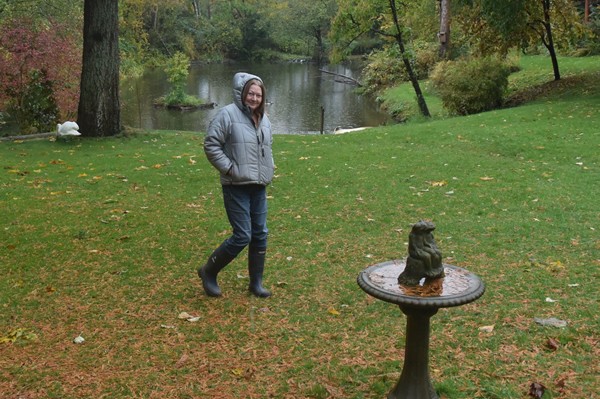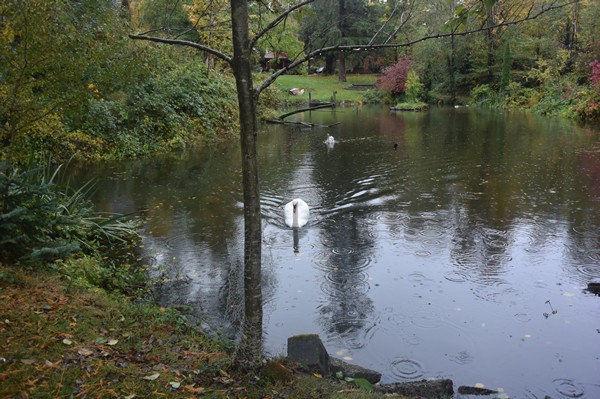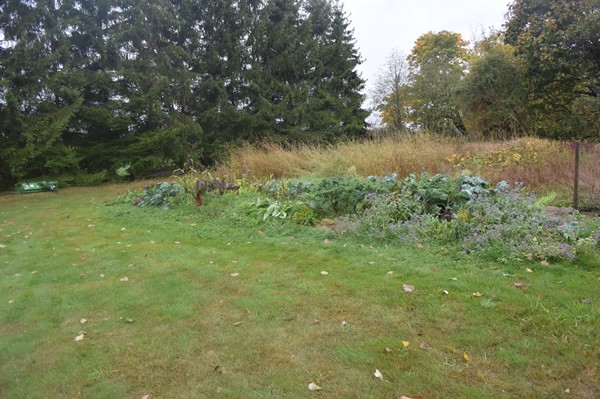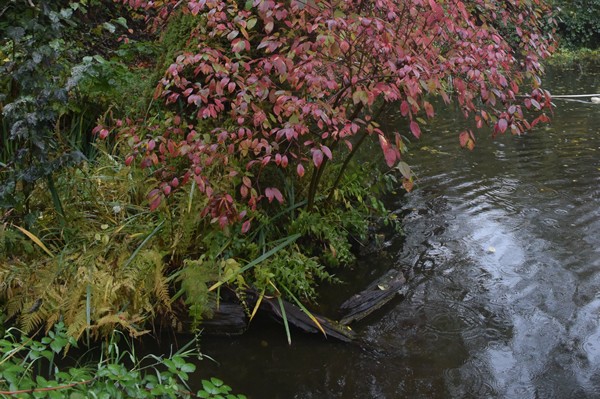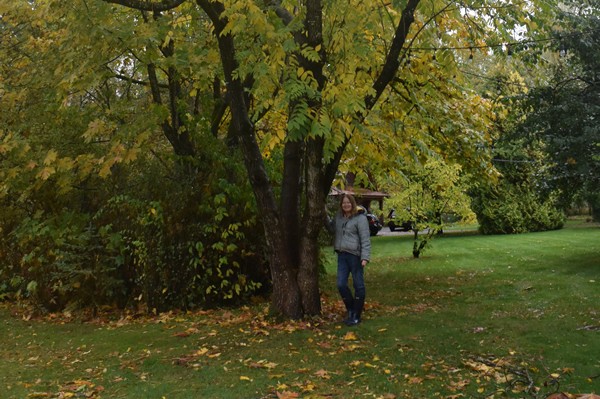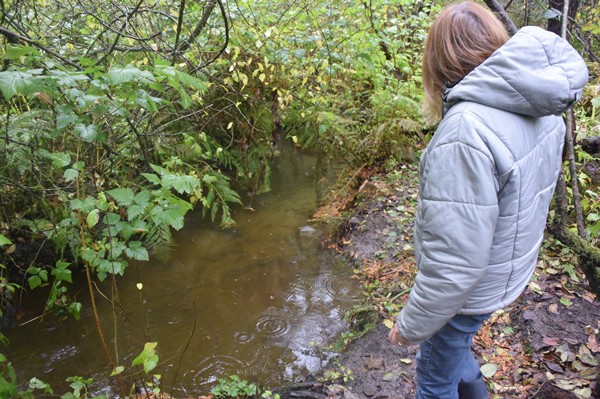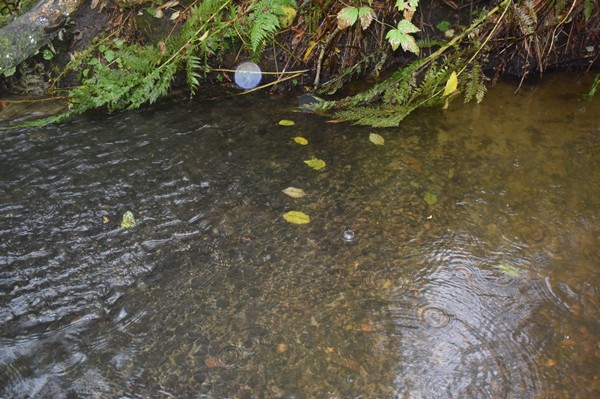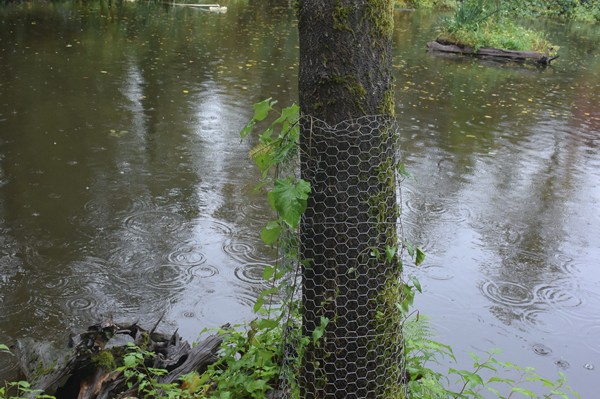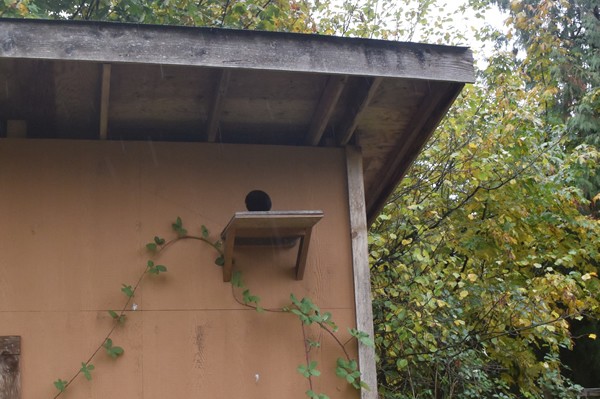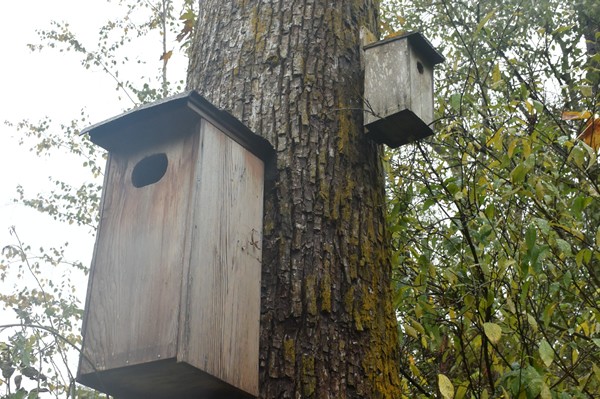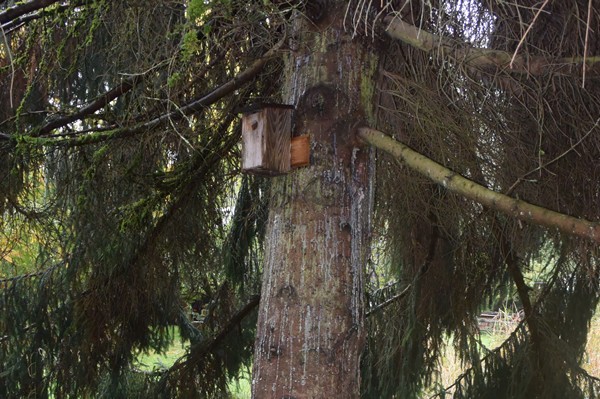Anna Dean with her large pond and riparian areas in the background
Swans swimming in one of two large ponds on the property
Vegetable patch
A Red-osier Dogwood planted by Anna
Anna with a tree she planted
Anna looking at one of the gravel pits she had created for salmon habitat
Salmon habitat
Tree protected from beavers with wire mesh
One of two occupied Barn Owl boxes
Bird boxes
Squirrel box
Site Description
Name of the site: Harmony Farms
Address: Lower Mainland |
Size: 10 acres
Type of production: Vegetables and chickens
Owned property: 32 years
“It’s been a labor of love. I try to enhance it with as many native plants as I can and to make places for the salamanders and frogs.”
~Anna Dean
Stewardship Practices Guides
The following guides are relevant to this project site
- Riparian Areas in Settled Landscapes
- Guidance for Restoration Activities in Riparian Areas
- Drainage Maintenance in Agricultural Waterways
Click to download the table for stewardship practices at the Harmony Farms.
Stewardship project partners
Fraser Valley Conservancy
Barn Owls BC
Nicomekl Enhancement Society
Project Overview
Anna Dean bought her 10-acre property in 1985. Ever since she has worked to restore the property into a thriving ecosystem providing habitat for a multitude of species, including many species at risk. The property has several water bodies that run through and adjacent, including Armstrong Creek and Nicomekl River. Anna describes recognizing the potential of the property, which at the time was far away from development, and had lots of potential aquatic habitat:
I saw the pond and the creek and that it was far away from development. And I thought: “I want to fix this place up and make it nice,” so I bought it.
Anna describes the state of the property when she bought it in 1985. There was a large amount of garbage and the property seemed devoid of wildlife:
We can go back 32 years when I bought the property. There was the car bodies and garbage and beer bottles and all assortment of things everywhere. You couldn’t even see the pond. Judging by things I found, I think anything that moved around here had been shot. It just hadn’t been looked after.
While working full-time in transit operations, Anna started to restore the natural habitat on the property. She started by cleaning up the garbage and planting trees.
I started cleaning up the place getting rid of all the buckets of oil and the metal in the garbage and animal bones and everything. It was a difficult job. I didn’t have a lot of the money at the time, so I would rescue trees from places that were being developed and dig them up, bring home in my car, and plant them here. A lot of these trees are rescue trees.
Over the years, she has completed many other projects including creating salmon habitat and diversifying aquatic habitat on the property. With advice from the Nicomekl Enhancement Society and the Department of Oceans and Fisheries, Anna created salmon habitat in the creek. She describes how she was careful to leave habitat for the lampreys and crayfish which already lived in the creek.
I contacted Nicomekl Enhancement Society and worked with them and the Department of Fisheries and Oceans [now Fisheries and Oceans Canada]. I got a big load of gravel and we had to do it with wheelbarrows. We had to dig the mud out first so we dug some of the mud out and put it on the edge and then I seeded it right away. We put the spawning gravel in and we didn’t do the entire creek. It winds through the property but we wanted to leave muddy parts because there are those lampreys and crayfish in there. I didn’t want to change the entire ecosystem of the creek. Starting in 2012, we released Chum, Coho, and Pink Salmon fry into the creek. Over the last couple of years, we’ve had not huge runs, but the salmon are coming up the creek.
Anna has also created multiple aquatic habitat to diversify the aquatic habitat on her property. She created a small ephemeral pond for Tree Frogs and Long-toed Salamanders, which were not able to complete with invasive bullfrogs in the larger waterbodies.
Because there were bullfrogs in [the larger pond] and it’s hard to get rid of them. I had a pond dug in the corner of the property just for tree frogs because it dries out every year so the bull frogs don’t want to want to go in there so it’s turned out to be a perfect place for the tree frogs and those Long-toed Salamanders. They breed there and I get all kinds of little ones come out of that little pond and it’s not all that big you know.
She also created another pond for the wood ducks who prefer more sheltered water bodies.
I enhanced it by putting another pond down the road that the wood ducks really like because it’s more sheltered. It’s got trees all the way around it. Not as open as this one. I see a difference with what waterfowl likes which pond.
The bird feeders and bird boxes that Anna has placed on her land has also drawn much birdlife to the area. This includes two bird boxes for Barn Owls.
I started feeding the birds and the birds started coming and then all kinds of amazing waterfowl and things came to the pond you know otters and muskrats, and herons and so much wildlife. I work with Sophie Hindmarch for the Barn Owls.
More recently, Anna has worked with the Fraser Valley Conservancy [FVC] to further revegetate the riparian areas:
Rachel [from FVC] came out, and I helped her, and we planted Pacific Crab Apple, Hardhack, Wild Cranberry and Red-ozier Dogwood. I’m working with [Tamsin from FVC], doing more native plantings.
Key Stewardship Actions:
- Protect existing riparian areas
- Establish new or restore degraded riparian buffers
Champions
Ann Dean
Motivation
Anna’s upbringing provided the basis for what motivates her to protect and restore her land. She describes her parents teaching her to ‘look after nature’ and her father’s approach to sharing the land with wildlife.
I think I’ve always loved nature and I’ve always appreciated nature. I grew up that way and I was taught by my parents to look after nature. We had 40 acres, and my dad said: “half of it’s for us and half that’s for nature.” We would grow a big garden and he would always grow an acre of garden for the family and an acre for the deer. I think that’s where it started for me. We grow all our own fruit. We have lots of fruit trees. And I do the same, I pick half the apples and then the other half sit on the tree for the winter and the woodpeckers pick up them and the birds peck at them and raccoons eat them. I’ve just carried that through.
She explains that this upbringing instilled in her an appreciation for nature. These feelings towards nature drive her stewardship work.
I learned to appreciate all those things and I grew up in this kind of environment. I can’t think of any other way. It’s been a labor of love. I try to enhance it with as many native plants as I can and to make places for the salamanders and frogs.
Challenges
One of the challenges to any stewardship project is the potential for outside influences, negating all the effort spent on a project. It is something that has at times worried Anna.
I think the [salmon habitat restoration] was hard because it was hard work and of course all the time I’m thinking what if somebody upstream dumps something in the stream. That hasn’t happened, but you just think what if they empty their swimming pool or something so you can get a little anxious about that.
However, for the most part, Anna counts herself as lucky to have great neighbours who use good environmental practices.
We don’t use any pesticides and the positive thing that’s happened for me here is there’s a big farm that runs down two sides of my property. So Nicomekl Farms down below. He owns hundreds of acres and he went organic like years and years ago. And that’s been good for me, because I think it’s better. I see way more raptors than I ever saw before. He always communicates with his neighbours. He lets you know in writing. He gives letters to the neighbours to explain his practices and why he does what he does.
Another concern for Anna is the long-term viability of the land. She wants to ensure that the land remains a sanctuary for wildlife habitat in the future.
I’m starting to worry about what happens if I get too old to look after it. I’m not there yet. I figure I have a lot of energy left. So I already approached Surrey, but I never got a response back about you know would they want it as a nature reserve park or something because I really would hesitate just to sell it cause I don’t know what would happen to it and I would I really think it should be preserved because of the diversity. It’s not immediate you know but it’s something that’s in my mind now that never used to be.
Invasive species such as yellow flag iris, blackberries, bull frogs, and grey squirrels also provide a challenge to creating a healthy native ecosystem. She describes the threat to native squirrel populations from invasive squirrels, which also damage bird populations.
I have five or six [Douglas squirrels] on the property and I have flying squirrels in the back. Those big grey and black squirrels they’re not native and they eat the baby birds.
Outcomes
Anna has seen great environmental gains over the past 30 years. On her property she has wood ducks, salmon, eagles, beavers, raccoons, otters, red-legged frogs, tree frogs, pillated woodpeckers, long-toed salamanders, Western painted turtles, and many more species. Seeing all this wildlife is a rewarding experience for Anna and she describes some of the results of installing wood duck boxes and salmon spawning grounds.
I think just looking up now and seeing the most of these wood ducks have hatched here because I have probably six wood duck nesting boxes and they hatch here and I know that these are the adults coming back. That’s a reward when you see the salmon coming up the creek, it’s just so moving how far they’ve been and what they’ve been through and they come back and they’re huge. And then the eagles come and eat them and it’s that’s pretty amazing to see you in your own home.
Anna’s work with other organizations on her stewardship projects has also allowed her to connect and share with others. She also mentions learning from her partners about public funds to help with restoration work.
I really like to share what I have here. Because it’s really positive. It’s the sharing of information but sharing of the successes as well. What can be done and what is being done. I think we all get a little depressed sometimes when we look around and see what’s going on and we think there’s no hope and there is hope. So I think that’s the biggest thing that’s that is great. I wasn’t aware of the public funds that the federal funds that are made available for some of these projects.
Some of her efforts have also been replicated by her neighbours. She describes how one of her neighbours put up a barn owl box after hearing about the barn owls that now live on Anna’s land.
My neighbour across the street put up an owl box because we put up our box. They said, “wow you’ve got owls, we’d like to put one up,” and so they built one and we helped put it up with our boom lift. They didn’t have a barn so they put in a big post and we helped them put it up in. And they’re excited.
Stewardship Practices Menu
Learn more about Species at Risk
Stewardship Practices Case Studies
Fraser Valley & Lower Mainland Sites
Kootenay Sites
Okanagan Sites
Vancouver Island Sites
Contact Information
Email: info@stewardshipcentrebc.ca
Find us on social media
Facebook: @StewardshipCentreforBC
LinkedIn: @StewardshipCentreBC YouTube: @stewardshipcentreforbc1047 Instagram: @StewardshipBC

